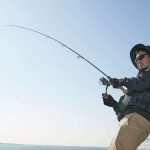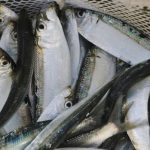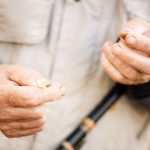Hard baits are tough and durable fishing lures made from materials unlike bait-fish bodies. They have hard materials designed for use in areas that include rocks, concrete structures, and fallen trees. Fish strike the baits because of their movement and appearance. Hard baits have shapes and colors like favorite food fish and move in ways that attract predators. Among the many types of hard baits are crank baits, minnows, and deep diver baits. Each operates at depths indicated on the packaging and use color and shine to attract fish. Bright colors and shiny finishes are best for cloudy or murky water conditions. An ideal method for using hard baits is to make frequent contact with the bottom, or structure but not so much that the bait sticks. This balance of swimming and bumping is the best pattern for hard baits, one that produces a high volume of strikes
Crank baits take their swimming action from the design of the lure, the retrieve technique, and speed of the retrieve. Designed to run at certain depths, they ride at high, medium, or low levels in the water. The advantages of crank baits are their versatility and ability to cover a large area of water. Determined by the size of the plastic bill in front of the lure, the running depth will enable the lure to skim just above the bottom or a layer of structure such as grass or sunken timber. One can manage the running depths according to conditions. The skimming action creates a significant advantage when striking the bottom or hitting rocks and objects. These collisions attract predators and trigger strikes. Designed with shifting interior weights, crank baits can fly a long distance when cast.
One should have an assortment of crank baits including shallow, medium, and deep running lures. The line weight is also important. Heavy line keeps the lure running higher than light line. Heavy line allows one to pull the bait out of grass and off structures easily and in a lifelike manner.
Minnow baits are versatile fishing lures. Effective as top water, suspended, or deep diving baits, they catch fish in all seasons and conditions. Whether used as a swimming bait, with a jerking motion, or in stop and start technique, predators strike them because they simulate a small wounded fish. Top water action can be especially entertaining for its sudden and spectacular strikes as the predators rise from beneath to capture a small fish.
Some minnow baits have sliding weight systems to permit long casts and lengthy retrieves. Used in this way, they cover a wide area of water. Designers use color and flash to increase visibility, and artistic details to provide a lifelike appearance. Available in many sizes, the actions are floating, suspended below the surface, and deep diving. They can point up or down, depending upon placement of interior weights.
Deep diver baits are lipless hard baits that sink to the bottom. They are excellent for deep water and for reaching the deeper parts of any river, pond, or lake. They are ideal in the seasons of low grass growth, spring, fall and early winter in temperate areas. However, skillful anglers use them effectively year-around. They perform well in any conditions with the proper techniques, and the slow fall technique seems to trigger strikes in even difficult fishing conditions.
Deep diver baits do not snag or stick as much as crank baits or minnows in thick cover and fallen timber. They are versatile, and with heavy line, one can retrieve at slow speeds or rip through the grass and structure. Deep divers are the lure of choice for depths of 20 feet or more, and in any condition with little or no grass such as spawning areas. They work well with variable speeds, rise and fall, and start-and-stop techniques. Designed for long casting they can work well along contours such as drop offs where a shallow shelf areas descend into a deeper channels.
Yellow Bird Products
1803 Holian Drive
Spring Grove, IL 60081
815-469-9686




